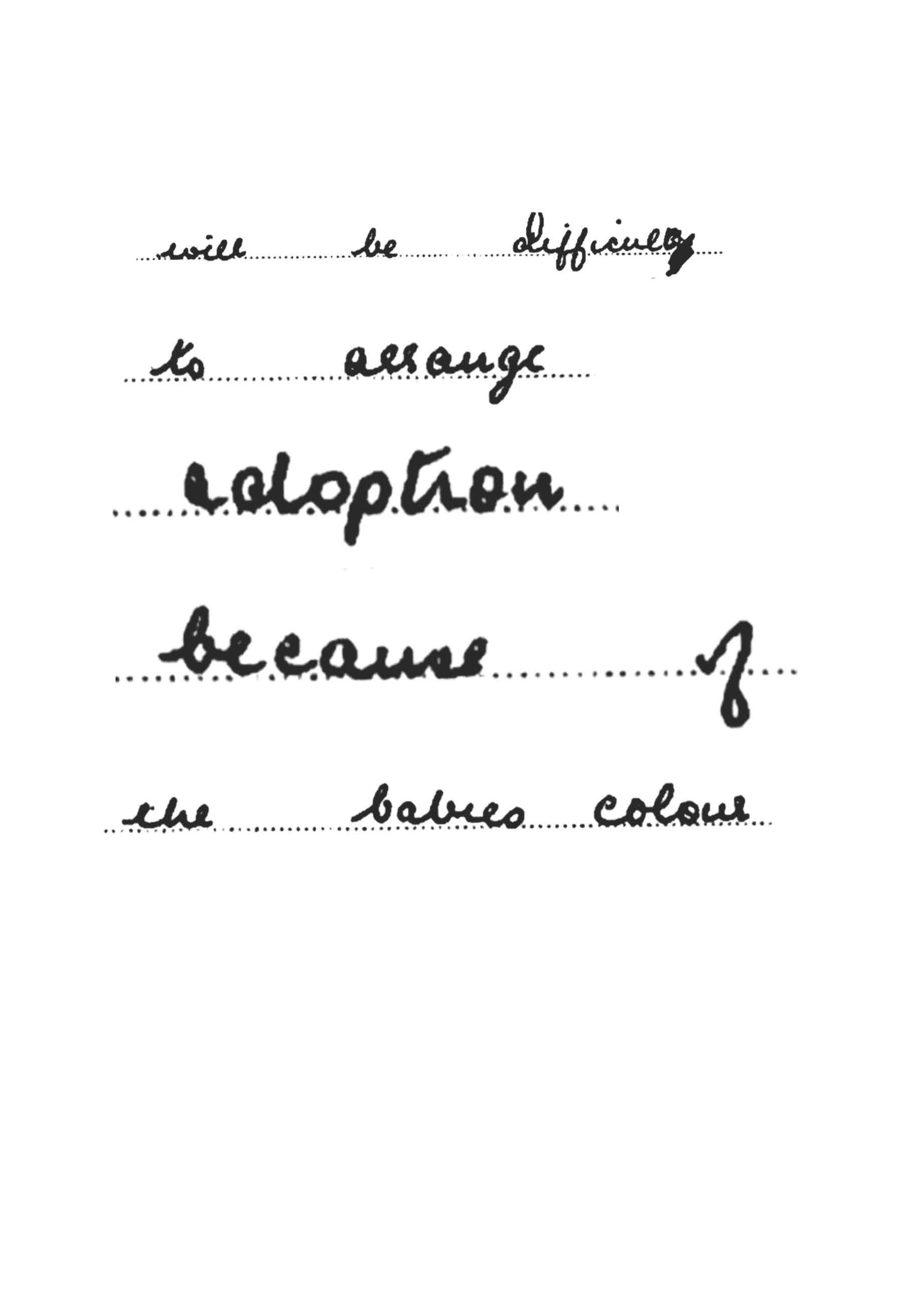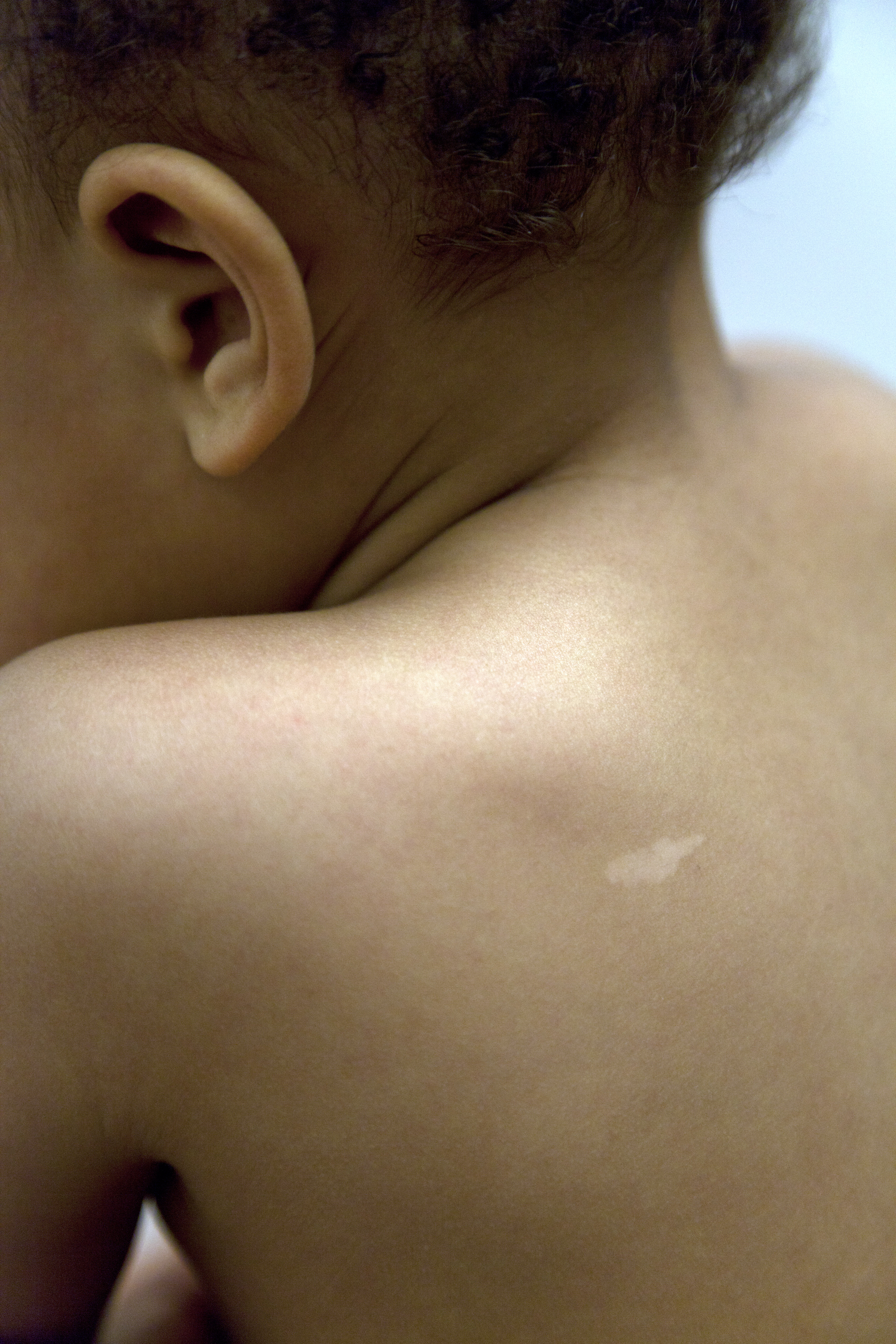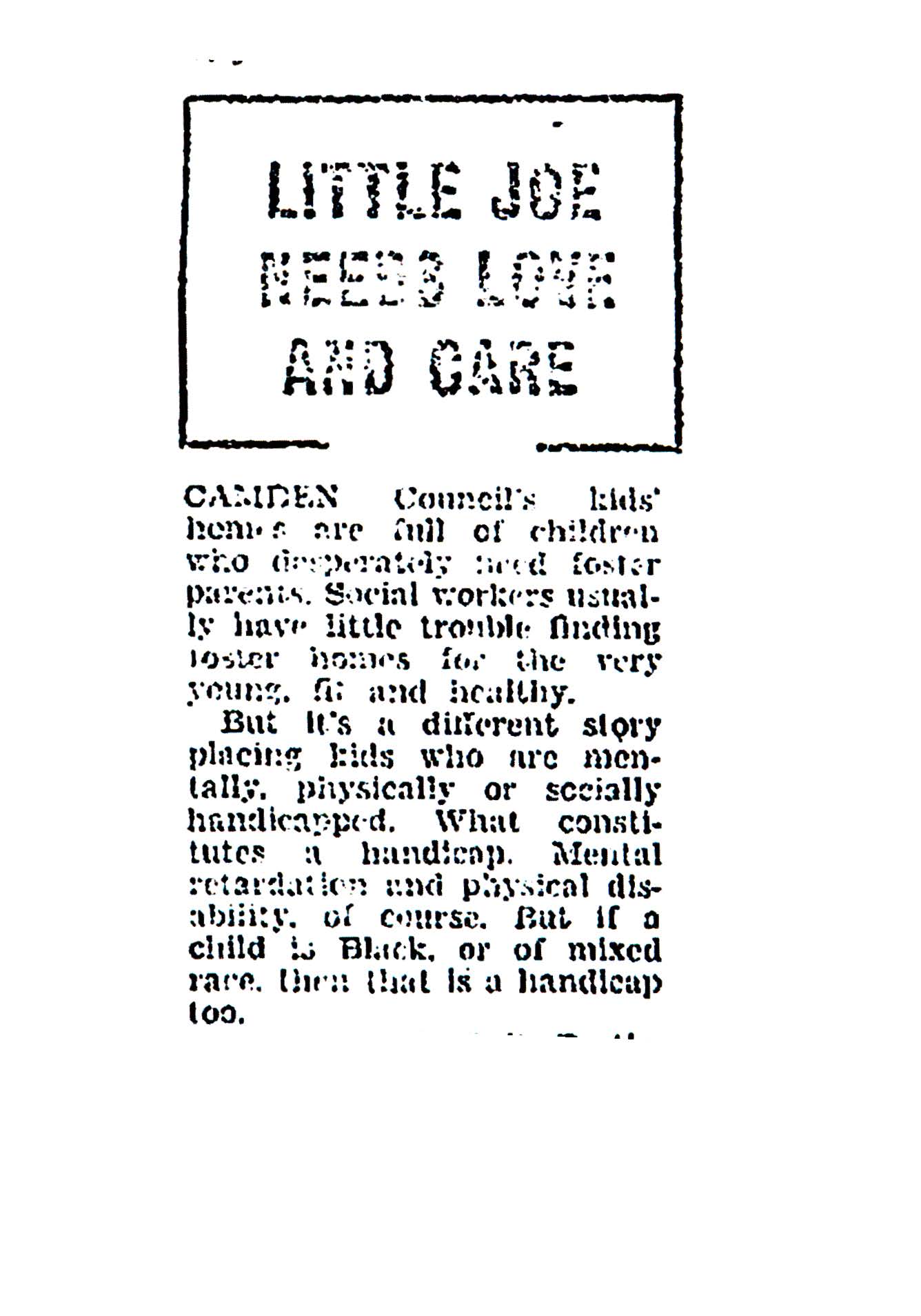
Featured Artist: Qiana Mestrich
Photographer | Writer

“Untitled (Maura and Joseph in Trafalgar Square), 1965” From the series Hard to Place (2016) Vintage photographic print

Page 42 from the book Hard to Place (2016)

“Untitled (Birthmark)” From the series Hard to Place (2016) Archival Pigment Print

Page 46 from the book Hard to Place (2016) From the series Hard to Place (2016) Archival Pigment Print
Through still photography my work exposes hidden or denied histories, giving visibility to stories shaped by immigration, assimilation and the perceived failures of multiculturalism. I work primarily within documentary photography but have also employed archival photographs, texts and found digital imagery to create conceptual, constructed pieces.
My practice is research driven and I often use my own personal/family history as a place of reference because it is both what I know best and what I know little of. Driven by the Buddhist philosophy of interconnectedness by which I was raised, I make work because I don’t believe in coincidence. Always seeking to uncover seemingly tenuous connections, I believe the photographic image has the power to relate the personal with the universal.
My latest series, Hard to Place traces the journey of an orphan boy of Nigerian and Irish parentage growing up in 1960s/70s London. A “half-cast(e)” child in 1960s and ‘70s England, Joseph was considered “hard to place” amongst the mostly white, adoptive families. Consequently, Joseph was placed “in care” at eight different times from age three to seventeen.
Joseph is my husband, we met online in 2007. On our first date he nervously told me his lifestory, continuously pulling at his sleeves to hide the ink of bad decisions made during his teenage years as a black skinhead. That night he told me about how he was born in the UK to immigrant parents, eventually growing up in an orphanage located in the posh London neighborhood of Hampstead. We were both born on the 8th (of different months), both only children and we were both “mixed” with unanswered questions about our family origins…that night Joseph and I immediately connected and we’ve been together ever since.
As a wife, over the past six years I’ve witnessed Joseph become a father with little guidance and only an instinct of love. The little boy in the color, documentary images seen in Hard To Place is our son. As a photographer, my lens has captured tender and curious moments with my son and in these images he often becomes that precocious, yet lonely little boy I imagine his father was as a child. As a mother, I’ve developed the utmost compassion for Joseph’s mother and I can’t fathom the (inner and outer) struggles she endured as a single, Irish woman with a black child in a xenophobic and racist society.
Through the United Kingdom’s Data Protection Act of 1998, in 2013 Joseph Robert Cullen received two legal-sized books stuffed with photocopied files documenting the years he spent as an orphan. The documents include typed and handwritten text written by social workers observing both Joseph and his mother Maura aka Maureen who often needed financial and housing assistance. Combining confidential government documentation, archival photographs, personal possessions and documentary images, this series reveals the social and moral forces that denied Joseph his birthright to a family while imagining an alternate (albeit uncertain) narrative. This series includes photographic, archival material and other possessions belonging to Joseph’s parents which he inherited after their passing. The inclusion of these personal archives counters the inherent definition of the orphan child as someone who comes from nothing and no one.
The dominant narrative of mixed-race orphans is that they are all born of wars, the product of illicit love affairs (or rapes) between women and the soldiers that occupied their countries. Some popular examples of these “occupation babies” include those born during/post World War II in Japan and the Korean War. It’s interesting to note that although white soldiers fathered children (often at higher rates), the offspring of black soldiers were far more ostracized.
A relationship between two people is fostered and sustained not only by the love that each person has for one another, but by the support it receives from their community and others outside their union. Even the general social sentiment plays a role in validating their union, allowing for such simple pleasures yet symbolic gestures such as holding hands in public.
I’ve self published Hard To Place as a photography book and the first spread features a portrait of Joseph’s father on the left and his mother on the right. The reason why I chose the book form to represent this series is in relation to the family album or scrapbook, mediums meant to preserve memories. For me this pairing of parents was important to create as it is a familiar photograph found in family albums.
This coupling, preserved in photographic emulsion, has been a constant in the history of the medium. So much so that people who’ve been raised by both parents often take this kind of photograph for granted not realizing how many people worldwide do not have this visual affirmation of the love that created them. I don’t know why Joseph’s parents were never photographed together, but I do recognize the power of this formal arrangement (specifically in the shaping of a mixed-race identity) and have even replicated it on the walls of our home.
The orphan is a common human archetype. There have been many notable celebrities, world leaders, figures within classical history and religious scripture, in literature and even comic book heroes who began life as orphans. Yet there has been very little within popular culture, international news or the arts about ordinary children made orphan because of the strain of historical and everyday racist attitudes. We don’t often hear of the children abandoned by one or both parents because of the stress of discrimination from society and often their respective family members that has fractured their unions.
Alone and marginalized, these children bear the intolerable weight of their parent’s failed love and that of mankind’s dark, unsettled history with race. I’m not sure which hurts worse.
Questions for Further Consideration
- Are mixed-race orphans (i.e. bodies) considered more desirable today for adoption?
- How can we leverage visual art and culture to publicly affirm mixed-race identities?
Additional Reading
Essay on Hard To Place by writer Paula Kupfer
http://booklyn.org/events/qiana-mestrich-hard-to-place/
RESPONSE
Assemblages convey stories through their grouping and positioning of objects, and Qiana Mestrich’s work Hard to Place weaves the narrative of her husband’s past, present, and future through the lens of acute observation and love. The title, Hard to Place, references the difficulty of placing Joseph in adoption because of his mixed heritage, but also the title alludes to the physical ambiguity of the multiracial body. “What are you?” is a frequent question a mixed body hears because the ways our bodies present themselves make us hard to place as well. What struck me was the speculative elements of Mestrich’s piece, particularly how the piece fill the gaps where Joseph’s story is unclear. Through imagining a holistic narrative, the places where Joseph’s family story is incomplete is filled in with abstractions and the beauty of the everyday and mundane. The quotidian elements of Hard to Place show how Joseph’s story is at the same time very unique and quite ordinary.
-Dr. Alexandrina Agloro
Dr. Alexandrina Agloro is a game designer, community-based researcher, and media artist who believes in the possibilities of the decolonial imaginary using digital media as an emancipatory tool. She is an Assistant Professor of Interactive Media and Game Development at Worcester Polytechnic Institute. Find more about her work at http://agloro.org.
